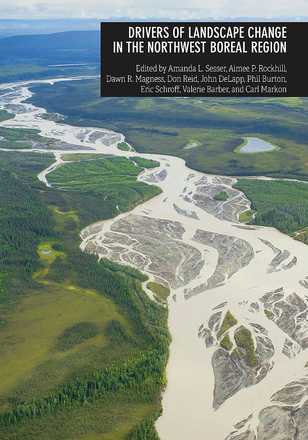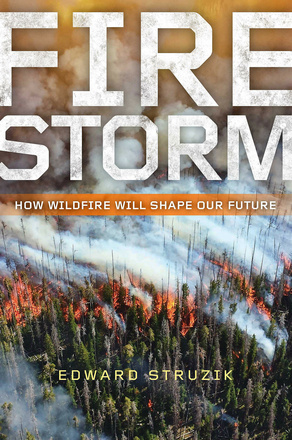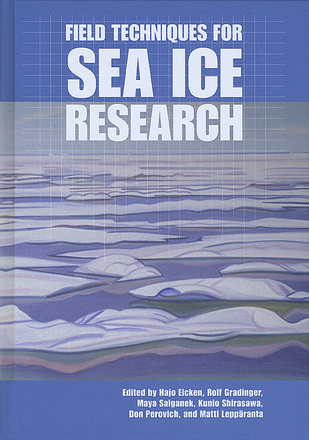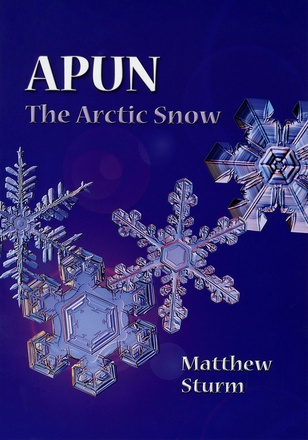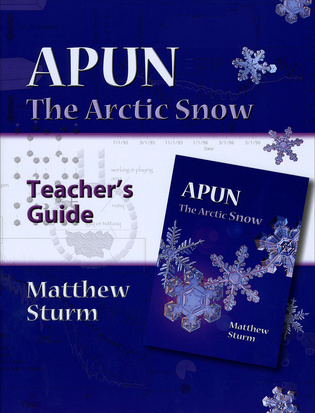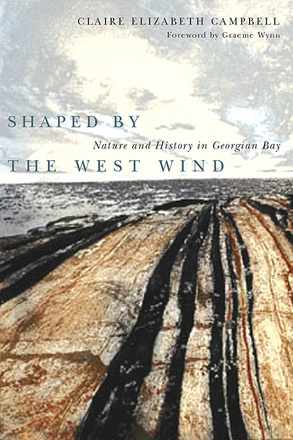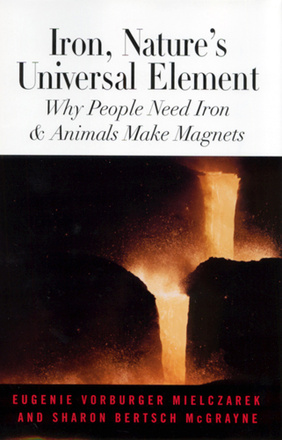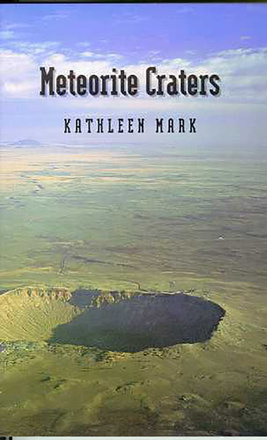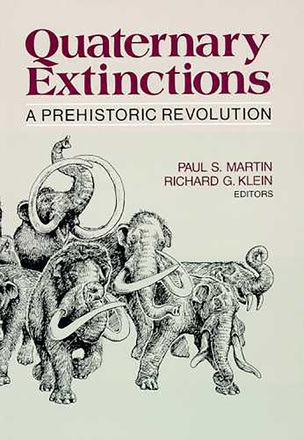Showing 1-12 of 12 items.
Drivers of Landscape Change in the Northwest Boreal Region
Edited by Carl Markon, Amanda L. Sesser, Aimee P. Rockhill, Dawn R. Magness, Don Reid, John DeLapp, Phil Burton, and Eric Schroff; By Valerie Barber
University of Alaska Press
300-word description:
The northwest boreal region (NWB) of North America is a land of extremes. Extending more than 1.3 million square kilometers (330 million acres), encompasses the entire spectrum between inundated wetlands below sea level to the tallest peak in North America. Permafrost gradients span from nearly continuous to absent. Boreal ecosystems are inherently dynamic and continually change over decades to millennia. The braided rivers that shape the valleys and wetlands continually change course, creating and removing vast wetlands and peatlands. Glacial melt, erosion, fires, permafrost dynamics, and wind-blown loess are among the shaping forces of the landscape. As a result, species interactions and ecosystem processes are shifting across time. The NWB is a data-poor region, and the intention of the NWB Landscape Conservation Cooperative (LCC) is to determine what data are not available and what data are available. For instance, historical baseline data describing the economic and social relationships in association with the ecological condition of the NWB landscape are often lacking. Likewise, the size and remoteness of this region make it challenging to measure basic biological information, such as species population sizes or trends. The paucity of weather and climate monitoring stations also compound the ability to model future climate trends and impacts, which is part of the nature of working in the north. The purpose of this volume is to create a resource for regional land and resource managers and researchers by synthesizing the latest research on the (1) historical/current status of landscape-scale drivers (including anthropogenic activities) and ecosystem processes, (2) future projected changes of each, and (3) the effects of changes on important resources. Generally, each chapter is coauthored by researchers and land and natural resource managers from the United States and Canada.
100-word description:
The northwest boreal region (NWB) of North America is a land of extremes. Extending more than 1.3 million square kilometers (330 million acres), encompasses the entire spectrum between inundated wetlands below sea level to the tallest peak in North America. The purpose of this volume is to create a resource for regional land and resource managers and researchers by synthesizing the latest research on the (1) historical/current status of landscape-scale drivers (including anthropogenic activities) and ecosystem processes, (2) future projected changes of each, and (3) the effects of changes on important resources. Generally, each chapter is coauthored by researchers and land and natural resource managers from the United States and Canada.
One sentence description:
This book was produced to provide a synthesis of the latest research on the historical/current status of landscape-scale drivers in the Northwest Boreal region of Alaska and western Canada for regional land and resource managers, researchers, and the general public.
The northwest boreal region (NWB) of North America is a land of extremes. Extending more than 1.3 million square kilometers (330 million acres), encompasses the entire spectrum between inundated wetlands below sea level to the tallest peak in North America. Permafrost gradients span from nearly continuous to absent. Boreal ecosystems are inherently dynamic and continually change over decades to millennia. The braided rivers that shape the valleys and wetlands continually change course, creating and removing vast wetlands and peatlands. Glacial melt, erosion, fires, permafrost dynamics, and wind-blown loess are among the shaping forces of the landscape. As a result, species interactions and ecosystem processes are shifting across time. The NWB is a data-poor region, and the intention of the NWB Landscape Conservation Cooperative (LCC) is to determine what data are not available and what data are available. For instance, historical baseline data describing the economic and social relationships in association with the ecological condition of the NWB landscape are often lacking. Likewise, the size and remoteness of this region make it challenging to measure basic biological information, such as species population sizes or trends. The paucity of weather and climate monitoring stations also compound the ability to model future climate trends and impacts, which is part of the nature of working in the north. The purpose of this volume is to create a resource for regional land and resource managers and researchers by synthesizing the latest research on the (1) historical/current status of landscape-scale drivers (including anthropogenic activities) and ecosystem processes, (2) future projected changes of each, and (3) the effects of changes on important resources. Generally, each chapter is coauthored by researchers and land and natural resource managers from the United States and Canada.
100-word description:
The northwest boreal region (NWB) of North America is a land of extremes. Extending more than 1.3 million square kilometers (330 million acres), encompasses the entire spectrum between inundated wetlands below sea level to the tallest peak in North America. The purpose of this volume is to create a resource for regional land and resource managers and researchers by synthesizing the latest research on the (1) historical/current status of landscape-scale drivers (including anthropogenic activities) and ecosystem processes, (2) future projected changes of each, and (3) the effects of changes on important resources. Generally, each chapter is coauthored by researchers and land and natural resource managers from the United States and Canada.
One sentence description:
This book was produced to provide a synthesis of the latest research on the historical/current status of landscape-scale drivers in the Northwest Boreal region of Alaska and western Canada for regional land and resource managers, researchers, and the general public.
Field Techniques for Sea-Ice Research
Multimedia DVD
Edited by Hajo Eicken and Maya Salganek
University of Alaska Press
Field Techniques for Sea-Ice Research
Edited by Hajo Eicken and Maya Salganek
University of Alaska Press, UAF Theatre Dept
Shaped by the West Wind
Nature and History in Georgian Bay
UBC Press
This wide-ranging history of Georgian Bay examines changing cultural representations of landscape over time, shifts between resource development and recreational use, and environmental politics of place -- stories central to the Canadian experience.
Permafrost
A guide to Frozen Ground in Transition
By Neil Davis
University of Alaska Press
Iron, Nature's Universal Element
Why People Need Iron and Animals Make Magnets
Rutgers University Press
One of nature’s most dramatic mysteries—the migration of birds, turtle, salmon and other animals—depends on iron magnets. The bodies of some animals contain minute deposits of magnetite that are sensory navigators. Far reaching in scope, Iron, Nature’s Universal Element also looks at global issues including iron’s power over the earth’s oceans, vegetation, and populations; and the low-protein diets that lead to long-term cognitive damage in iron-deficient children in poor countries.
Quaternary Extinctions
A Prehistoric Revolution
Edited by Paul S. Martin and Richard G. Klein
The University of Arizona Press
Stay Informed
Subscribe nowRecent News

